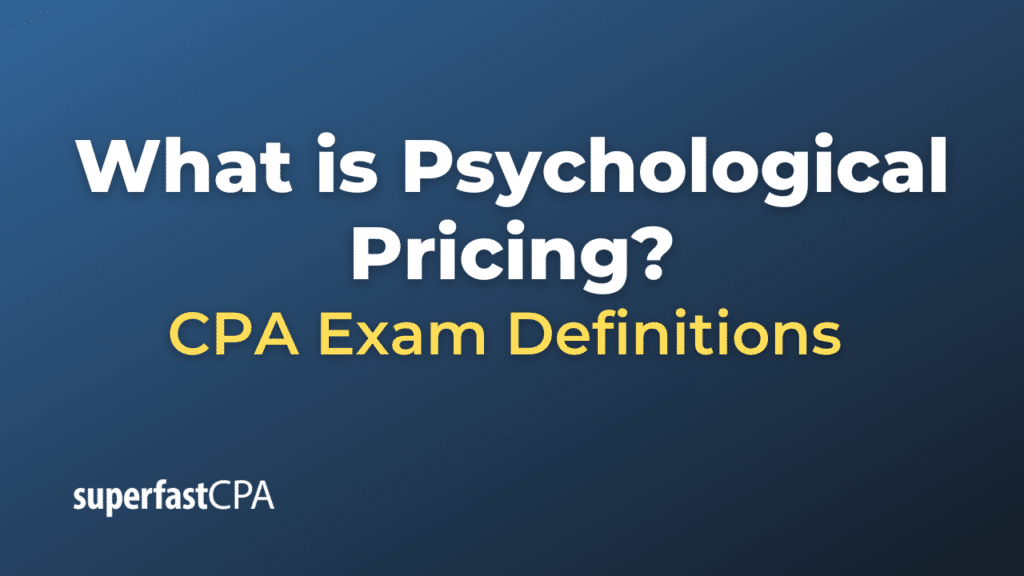Psychological Pricing
Psychological pricing is a pricing and marketing strategy based on the theory that certain prices have a psychological impact on consumers. The aim is to make a product or service seem cheaper or more enticing than it really is. This can help to increase sales and improve a company’s profitability.
Here are a few examples of psychological pricing strategies:
- Charm Pricing: This involves setting prices a little bit below a round number. For example, pricing an item at $9.99 instead of $10.00. The idea is that consumers will perceive $9.99 to be significantly less than $10.00, even though the difference is only one cent.
- Prestige Pricing: This is the opposite of charm pricing, where prices are set at round numbers like $200 or $2,000 instead of $199.99 or $1,999.99. The theory is that the rounded prices are seen as more prestigious, conveying a sense of quality or luxury.
- Price Ending: Prices ending in certain numbers can suggest a deal or high quality. For example, prices ending in .99 or .95 are often seen as bargains, while prices ending in .00 or .50 can convey a sense of quality or value.
- Odd-Even Pricing: This strategy involves setting prices to odd numbers (like $19.97) or even numbers (like $20.00), depending on what the company thinks will appeal more to its target audience.
- Comparative Pricing: This involves showing the original price slashed and displaying the discounted price next to it, which makes customers think they are getting a great deal.
Remember, the effectiveness of psychological pricing can depend on many factors, including the target audience, the nature of the product or service, the market conditions, and the overall branding and marketing strategy. It’s not a one-size-fits-all solution, but it can be a useful tool in a company’s pricing strategy.
Example of Psychological Pricing
Let’s take an example of a clothing retailer to understand the application of psychological pricing:
- Charm Pricing: The retailer prices a dress at $49.99 instead of rounding it up to $50.00. The price appears to be “under $50” at first glance, which can make the dress seem more affordable to consumers.
- Prestige Pricing: For a high-end designer purse, the retailer may choose to set the price at a round number like $500 instead of $499.99. This can make the purse seem more luxurious or high-quality, justifying the higher price in the minds of consumers.
- Price Ending: The retailer has found that prices ending in .95, such as $19.95, are perceived as bargains by their customers, so they price certain items like t-shirts and accessories this way.
- Odd-Even Pricing: Based on their target audience and what they perceive as appealing, the retailer may set some prices to odd numbers. For example, they may price a pair of jeans at $59.97.
- Comparative Pricing: During a sale, the retailer may display the original price of a coat slashed from $150 to $100. The substantial apparent discount can encourage consumers to perceive this as a great deal and make a purchase.
These examples demonstrate how psychological pricing can impact the perception of price and value, influencing consumers’ buying decisions. It’s important to note that the effectiveness of these strategies can vary based on factors such as the product, the brand, and the consumers themselves.













